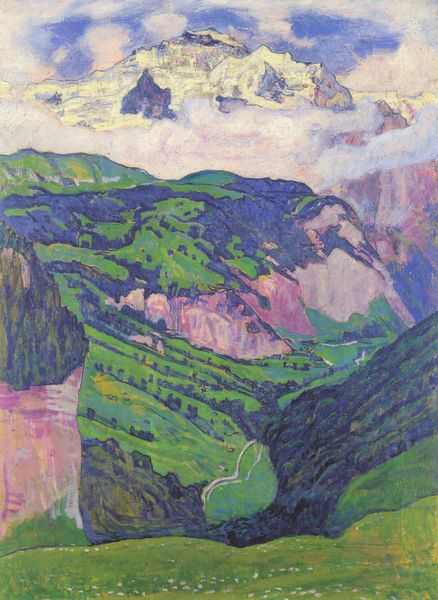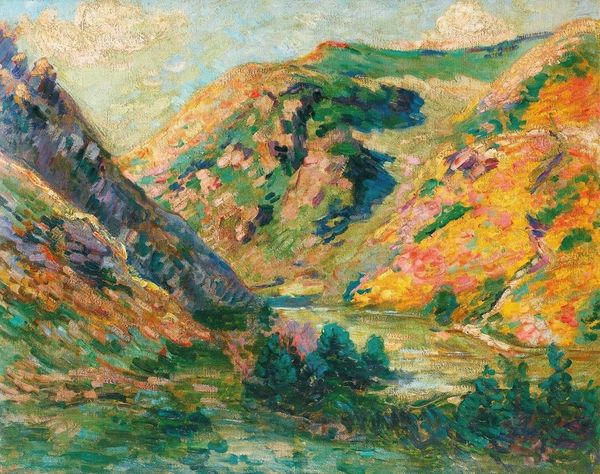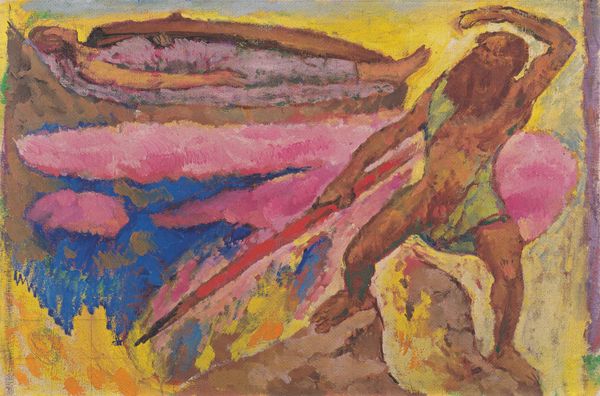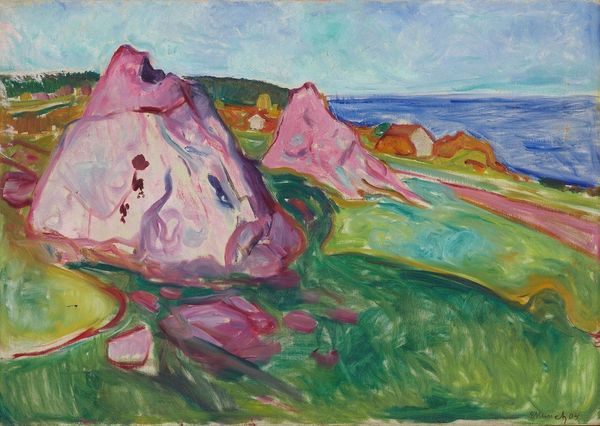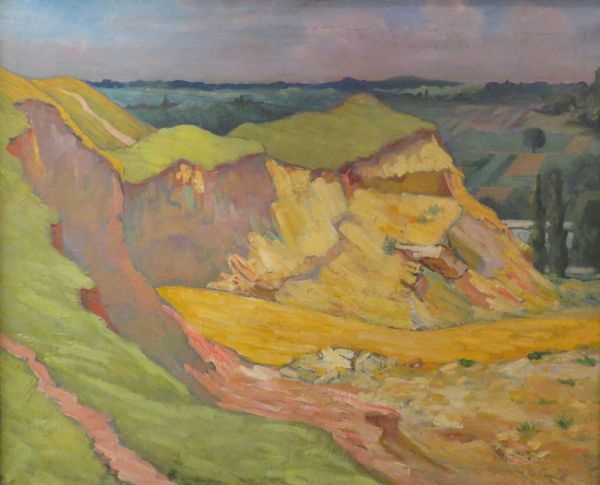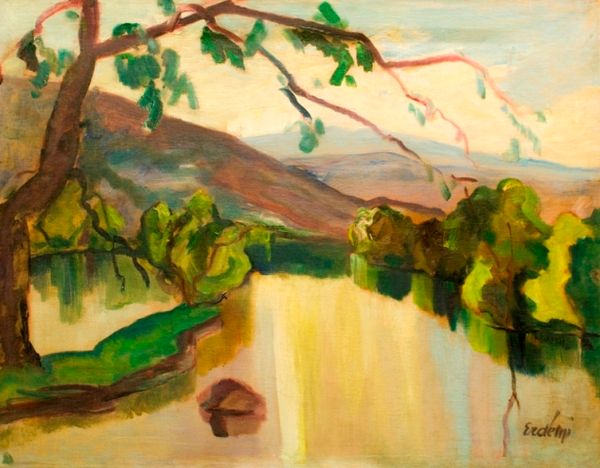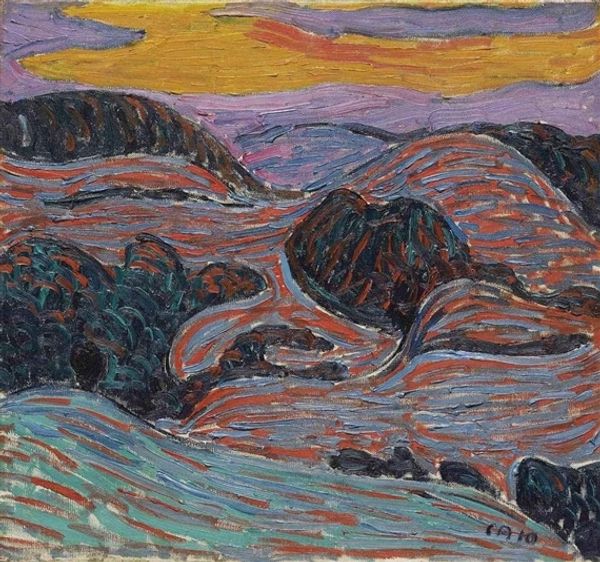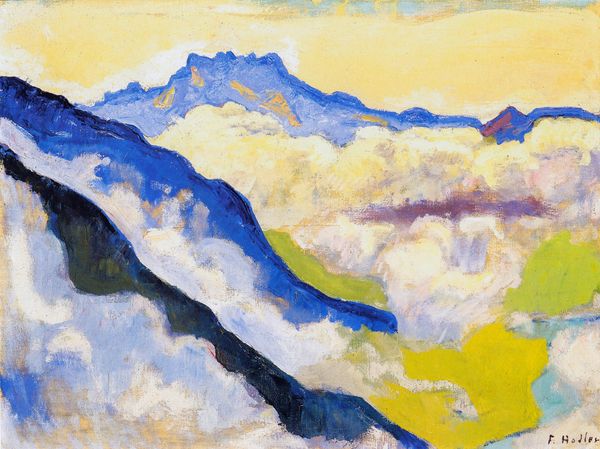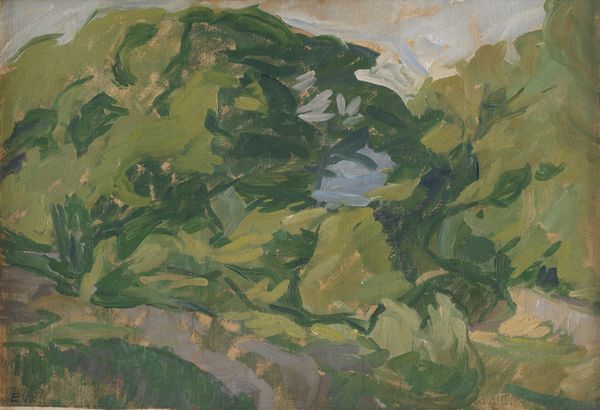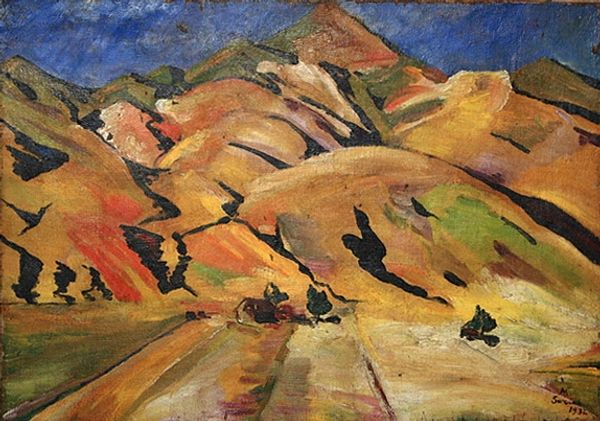
Copyright: Public Domain: Artvee
Paul Gauguin created this landscape, Above The Sea, in 1889 using oil on canvas. The painting invites you into a scene where land, sea, and sky merge through bold colors and flattened forms. Gauguin moves away from traditional perspective, opting instead for a composition where the horizon line is almost non-existent, pushing the foreground and background together. The artist’s brushstrokes are distinctly visible, creating a textured surface that emphasizes the materiality of the paint itself. Patches of pink, green, and blue are juxtaposed, creating a vibrant yet somewhat dissonant harmony. This technique aligns with Gauguin’s broader artistic project of moving beyond mere representation toward the expression of inner emotional states and challenging academic painting conventions. Ultimately, Above The Sea uses formal elements to construct a space that feels both familiar and dreamlike. The painting does not seek to replicate reality but rather to explore the expressive possibilities of color and form, inviting us to question our perceptions and engage with the artwork on a more visceral level.
Comments
No comments
Be the first to comment and join the conversation on the ultimate creative platform.
